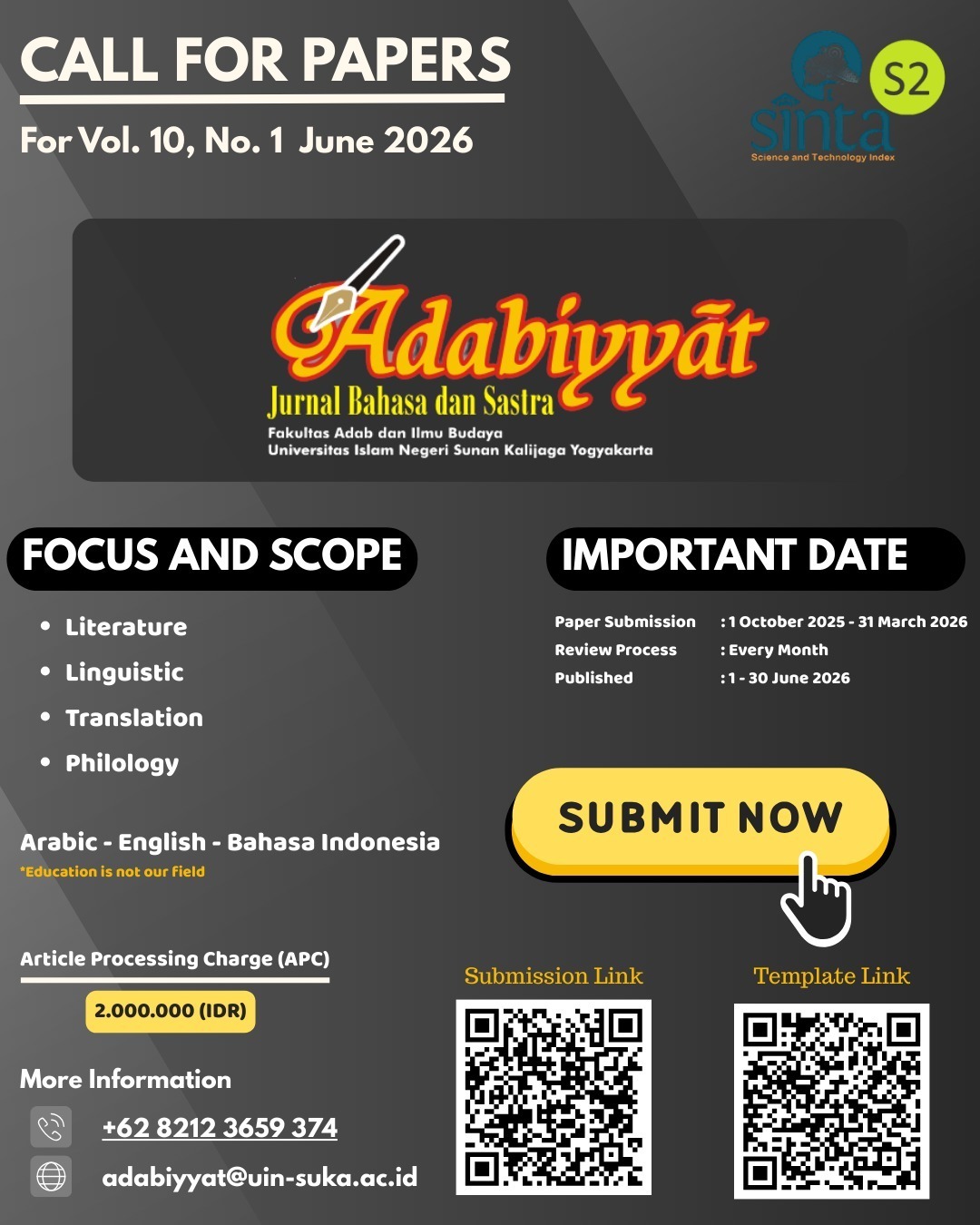TUTURAN LANGSUNG DAN TIDAK LANGSUNG DALAM AL-QUR`AN
DOI:
https://doi.org/10.14421/ajbs.2008.07101Abstract
Language always has two faces. It can either have its connotative meaning or denotative one, depending on the effects that the speaker desires. This paper aims at describing the examples taken from the Koran based on the type of sentences. They are interrogative and imperative, which are used denotatively or connotatively.
Downloads
References
Al-Zamakhsari. 2000. al-Kasysyāf. Mesir: Maktabah Misrha.
Arifin, Zaenal. 2000. Cermat Berbahasa Indonesia untuk Perguruan Tinggi. Jakarta: Akademika Pressindo.
Chaer, 1995. Sosiolinguistik: Perkenalan Awal, Jakarta: Rineka Cipta.
Jarīm, Alī. 1951. al-Balāghatu al-Wādhihatu. Mesir: Dār al-Ma’ārif.
Keraf, Gorys. 1982. Tata Bahasa Indonesia, Flores: Nusa Indah.
Leech, Geofry. 1983. Principles of Pragmatics. London: Longman.
Levinson, Stephen. 1983. Pragmatics. London: Cambridge University Press.
May, Jacob L. 1994. Pragmatic an Introduction. Cambridge: Brasil Blackwell.
Nashif, Hifni Bik. T.t. Kitab Qawā’id al-Lughah al-‘Arabiyah. Surabaya: Bongil Indah.
Parker, Frank. 1986. Linguistics for non-Linguists. London: ittle, Brown and Company Inc.
Wijana, I Dewa Putu. T.t. Dasar-dasar Pragmatik, Yogyakarta: Andi Offset.
Downloads
Published
Issue
Section
License
- Adabiyyāt: Jurnal Bahasa dan Sastra publishes all articles entirely in full text.
- It is permissible for readers to download and to use it for scientific purposes and scientific dissemination.
- The author can re-publish the article that has been published by the Adabiyyāt: Jurnal Bahasa dan Sastra after obtaining written permission from the editor. This letter can be obtained by submitting a request letter for permission to republish the article to Adabiyyāt: Jurnal Bahasa dan Sastra via email adabiyyat@uin-suka.ac.id. In the second publication, the author is required to include information that the article was firstly published by the Adabiyyāt: Jurnal Bahasa dan Sastra.









